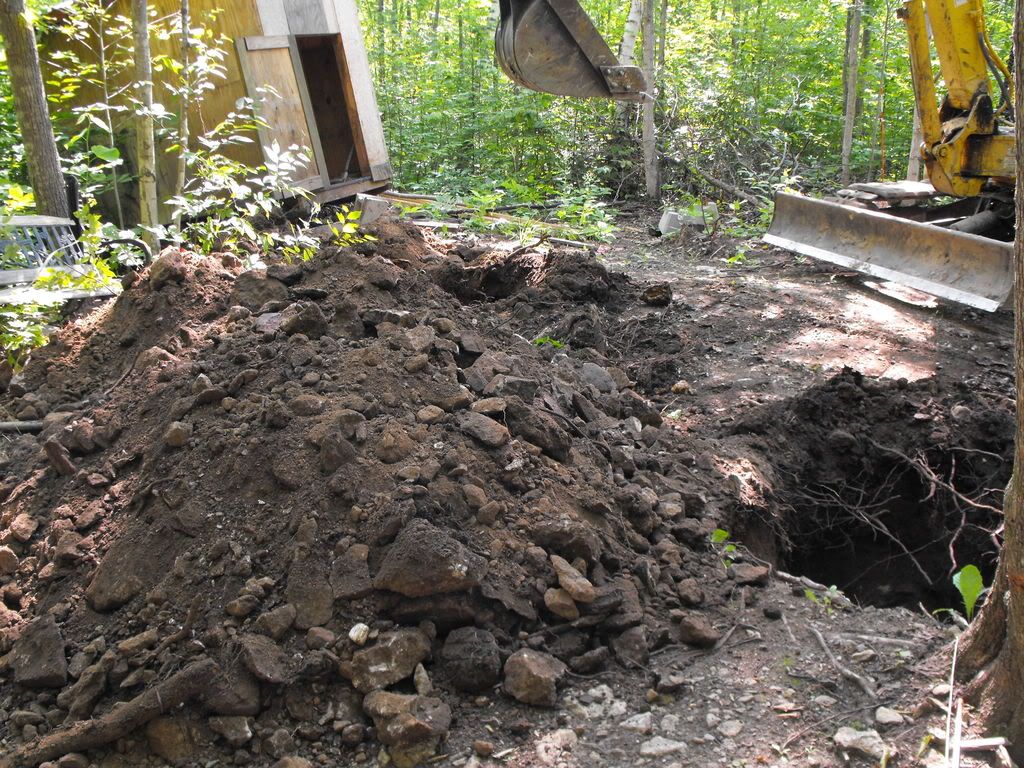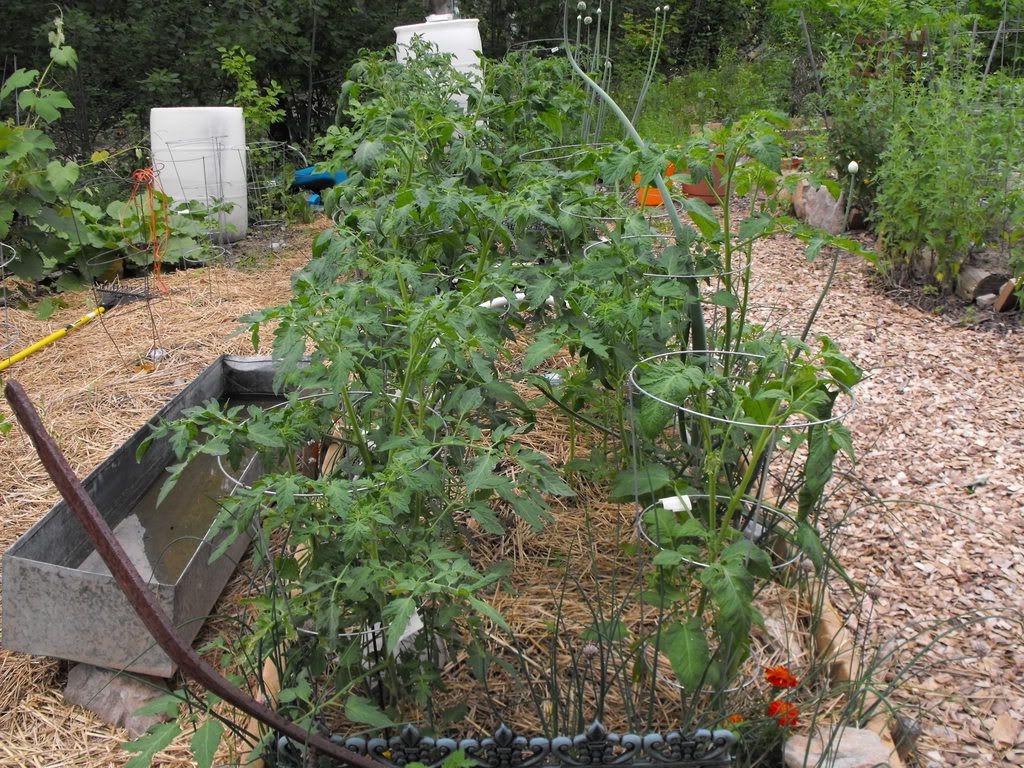

|
Member discussion regarding the methods, varieties and merits of growing tomatoes.
|
 |
|
|
Thread Tools | Display Modes |
|
|
#16 |
|
Tomatovillian™
Join Date: Jul 2009
Location: Johannesburg, South Africa - GrowZone 9
Posts: 595
|
 I'm already envious...but in the nicest possible way!! 
|
|
|

|
|
|
#17 |
|
Tomatovillian™
Join Date: Mar 2008
Location: Kansas CIty
Posts: 560
|
Those are nice beds! What's on the paths?
__________________
Kansas City, Missouri Zone 5b/6a 
|
|
|

|
|
|
#18 |
|
Tomatovillian™
Join Date: Nov 2008
Location: Tucson, AZ
Posts: 171
|
Wouldn't you know how gorgeous Suze's garden would be!! Awesome.
|
|
|

|
|
|
#19 |
|
Tomatovillian™
Join Date: May 2006
Location: Rock Hill, SC
Posts: 5,346
|
On Suze's pictures, that is pretty much beach sand. Yet she lives 180 mi from the shore.

__________________
[SIZE="3"]I've relaunched my gardening website -- [B]TheUnconventionalTomato.com[/B][/SIZE] * [I][SIZE="1"]*I'm not allowed to post weblinks so you'll have to copy-paste it manually.[/SIZE][/I] |
|
|

|
|
|
#20 |
|
Tomatovillian™
Join Date: Jul 2009
Location: Birmingham UK
Posts: 31
|
Growing in beds is a traditional method which was replaced by row planting in the 19th Century. I'm not sure when they started raising the beds, but it does seem to have become a fashion. I've been growing in flat beds for ten years, but increasing problems with waterlogging and flooding have pushed me to the point of thinking seriously about raised beds. The work involved has been putting me off - I've got a 600 square yard plot to think about - but I'll probably do it over several years. I can get the boards easily enough, so I'll probably buy a load of topsoil this winter and see how far it goes.
|
|
|

|
|
|
#21 |
|
Tomatovillian™
Join Date: Jan 2006
Location: SE PA..near Valley Forge
Posts: 839
|
I learned the method of raised beds from my Chinese mother-in-law back in the 1980s. She also taught me how to pre-spout my seeds in order to get a headstart on germination and insure all the seeds would mature into plants. The Chinese have used this method for centuries.
__________________
"Strong and bitter words indicate a weak cause". Victor Hugo |
|
|

|
|
|
#22 |
|
Tomatovillian™
Join Date: Jan 2008
Location: Zone 4 Lake Minnetonka, MN
Posts: 967
|
I need some texas tomato cages lol, Very nice plants!!!
|
|
|

|
|
|
#23 | |
|
Tomatovillian™
Join Date: Jul 2009
Location: So Cal
Posts: 10
|
Quote:
Would you mind sharing the Chinese seed sprouting method? Wondering if it's the same as what I already do! Many thanks! LF 
|
|
|
|

|
|
|
#24 |
|
Tomatovillian™
Join Date: Jan 2006
Location: SE PA..near Valley Forge
Posts: 839
|
In Canton province, she said they used to lay a long cloth on the ground, place rice seeds all along in many rows, cover the seeds with a mulch of rice straw and keep it damp until the seeds sprouted, then plant when they reached the appropriate size.
__________________
"Strong and bitter words indicate a weak cause". Victor Hugo |
|
|

|
|
|
#25 |
|
Tomatovillian™
Join Date: Feb 2006
Location: MS
Posts: 1,521
|
I cant' remember the numbers precisely, but this is close, if not exact. In 2001 I planted 78 tomatoes in big deep holes on flat ground in my yard. In a few days we had a big spring rain and the holes filled up and held water. I believe between 72-75 plants died. (This is in the area where we used to have a garden when I was a kid, the soil is fine. But I'm guessing the old gardens of childhood were planted in hipped up rows with some elevation.)
After this disaster I pulled all the plants and within a few days had several nice 4 X 12 raised beds, and went on to have a very nice tomato crop. I tweaked around on it and eventually had over 20 raised beds, each 4 X 12 and around 10 inches deep. My walkways were also four feet. Although this is certainly adequate, produces well, and is a standard size, last year I decided to make things a little more roomy. Now my raised beds are five feet wide with five feet walkways. A couple of things I will add that are usually brought up. What about the safety of treated wood? I believe there is a thread about this. Most studies say the treated wood won't hurt, especially since they changed the laws on this a while back. Still, as a matter of principle some still don't like to do this. This can be safely overcome however. First, the wider the bed the farther the row can be placed from the edge where the wood is. Second, you can add a layer or two layers or visqueen by stapling it to the inside of the treated wood frame. This will probably come as close as anything to prevent any moisture from the treated wood leaching laterally into the soil where the roots are. If you forego this you will have to use untreated wood which won't last long at all unless you use something like redwood or cypress. I fretted over the issue of using treated wood for months it seems. After reading some university test results I was convinced it was safe enough, and ahead and built everything with treated pine. There is another issue of "how deep?" I find it perfectly adequate and satisfactory to use either 10" or 12" 2x12's. The trick is not building the beds up to tall, but instead to dig out more inside the wood bed frame before you fill it with potting soil/humas/whatever you want to use. This keeps the root zone with a more stable temperature and moisture level, closer to what Mother Nature intended. The raised beds provide excellent drainage during those big spring rains, they warm faster in the spring also, and you have much easier control over your soil (potting mixes, peat moss, whatever you want to use thats light and fertile). However as the summer comes on and the temps increase, having some of the deep roots in the cooler deep soil helps. The bottom line is, you just can't beat a raised bed. You can accomplish some of the same with natural ground if you row ip up tall, but the work and soil amendments will soon wish you had just built a raised bed. My free .02 and worth every penny! Best of luck with your beds! DS
__________________
Zone 7B, N. MS |
|
|

|
|
|
#26 | |
|
Tomatovillian™
Join Date: Jul 2009
Location: So Cal
Posts: 10
|
Quote:
Thank you so much for the information!  Definitely not what I do but probably what my great grandmother would have done when she wasn't practicing her Chinese herbology. Do you modify this technique? LF |
|
|
|

|
|
|
#27 |
|
Tomatovillian™
Join Date: Sep 2009
Location: Alabama
Posts: 7,068
|
I love my raised beds made with treated boards that have lasted 30 years. The one big problem I have now that I'm older and less flexible is I made them 4ft wide which is perfect when you are young and can reach to the middle; but is now a problem.
Some nearby trees have given me some major root problems as the trees have gotten larger and spread their roots to where the fertilizer and water is. I have to take a shovel and dig them out every year and they leach out a lot of nutrients. I have a hard time getting anything but lettuce to grow where the roots invade. The other problem which is infrequent down here is it is very hard to keep them watered in a dry spell. |
|
|

|
|
|
#28 |
|
Tomatovillian™
Join Date: Feb 2006
Location: MS
Posts: 1,521
|
b54red, the way I handled the water problem was to take 2 or 3 inch PVC pipe and cut it into 24 -30 inch lengths. I put one end in the planting hole. Put it just deep enough to anchor the pipe firmly. You don't want it too deep where you are watering under the main root zone. Just deep enough to anchor it (4-6 inches usually for me), and this will also cause the water to seep in more slowly.
I cut one section out of my CRW cage and tilt the other end of the pipe through it. the CRW also helps to anchor the PVC pipe and you can even tie the pipe to the wire if you need to for more stability. Tilting them away from the bed and out toward the walkway makes them easy to see and use when the plants are big and full of foliage. I just walk down the row with a hose and fill up each pipe. Takes maybe 10 seconds each. All the water goes to the root zone with no waste and no water run off from the top of the beds, and no water on top for the weeds. If you need to fertilize with water soluable fertilize you can mix up your fertilizer and pour it in the pipes with a bucket or whatever you want to use, then go back and fill the pipes with water to dilute it more and get it on to the roots. If it's dry fertilizer you can just pour a little in the pipe and water it. You use a fraction of the water and I can't find anything that works better. DS If roots and the width of your beds is getting to be a problem, now is the time to take up the old system and put in a new one. I did that last winter. A 24 - 36 inch wide bed is usually ideal for maintaining with having to do all the stretching. One trick I learned when I went to 60" beds with corn or "row" crops, was not to plant the rows down the length of the bed, but instead put small rows from side to side, on the width. This way you can walk down the side of the beds and reach from one side to the other with a hoe, rake, etc. If this is still a bit of a stretch, you can easily reach to the center of the row from one side, and then tend the other side by walking down the walkway beside it on the opposite side. Going side to side like this, you never have to reach far with a hoe or stretch much with your arm to pick your harvest.
__________________
Zone 7B, N. MS |
|
|

|
|
|
#29 |
|
Tomatovillian™
Join Date: Feb 2008
Location: Up North
Posts: 660
|
I have raised beds at the property because this is the alternative
  
|
|
|

|
|
|
#30 |
|
Tomatovillian™
Join Date: Feb 2008
Location: Up North
Posts: 660
|
with 25 year old farm dirt

|
|
|

|
 |
|
|
